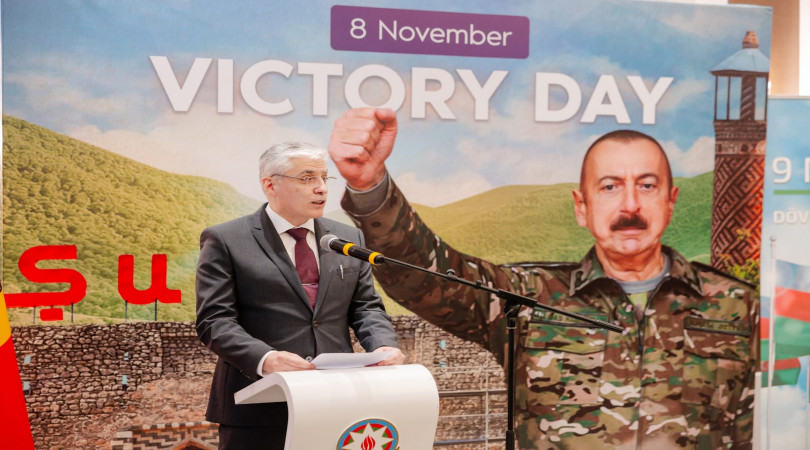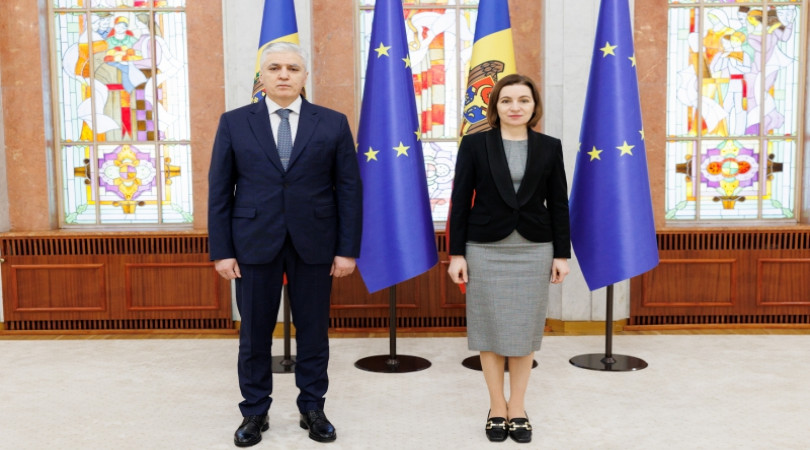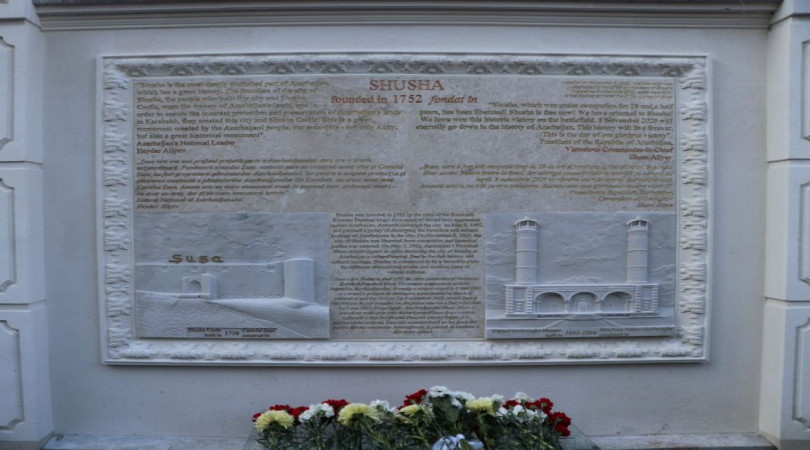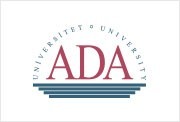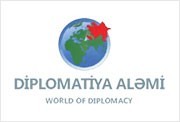Azerbaijani literature
Azerbaijani literature is based on deep sources of Azerbaijani folklore which has a rich variety of genre. Such epical folklore genres as fairy-tales and legends, proverbs and sayings are considered as expression of national wisdom and historically had strong influence on the folklore and classical literature of neighboring nations. Bayati - one of the lyrical genres of national folklore reflects versatility of lifestyle and traditions of the nation by artistic-emotional way. “Oghuzname”s - special collection of proverbs which convey wisdom of Oghuz tribes are also considered valuable monuments of Azerbaijani folklore. The epic “Kitabi Dada Gorgud” (“The Book of Grandfather Gorgud”) - one of the ancient cultural monuments of Turkic world and unique pearls of artistic and philosophical thought of Azerbaijan takes special interest with reflection of life, traditions and habits of Azerbaijani people. Observation and respect to the statehood, pre-eminence of laws and protection of social justice of the Oghuzes is brightly strengthened in this epic. “Kitabi Dada Gorgud” is the main source describing the Oghuzes – the predecessors of modern Azerbaijani people.
“Kitabi Dede Gorgud”, the roots of which reaches to mythological outlooks was taken into literary shape in the 11th century under the title of “Kitabi Dedem Gorgud”, but copies which have come down to us are the manuscripts written in the 16th century. Poetic language of the monument of artistic thought of Azerbaijani nation “Kitabi Dede Gorgud” legends is rich with artistic expressions. The fine points of national language, lots of proverbs, sayings and idiomatic expressions were skillfully used in them. Appearance of Islam religion by the end of the first quarter of the 7th century, its formation in a short period of time and its expansion from Arabian Peninsula to the large areas as Spain and China had a great impact on many countries of the Middle East as well as Azerbaijan. Starting from 7-8th centuries the socio-literary environment of Azerbaijan was developing in this direction. Occupation of Azerbaijan by Arabic Caliphate and spreading Islam religion in this area resulted in dominance of Arabic language in social-administrative, cultural and scientific life of the country. Lots of intellectuals of Azerbaijan – philosophers, writers and poets had to write in this very language. Azerbaijani writers of the 9-10 centuries Mahammad ibn Al Maraghayi (9th), Omar ibn Ali Zanjani (9th) and dozens of others wrote their valuable works related to different spheres of science mainly in Arabic language. The small part of literary legacy of such Azerbaijani poets as Ismail ibn Yasar, Musa Shahavat and Abu -l – Abbas Amani who famed as “mevali” in strange lands and lived as captives and refugees because of Arabic invasion in the 7-8th centuries could reach to our days.
11-12th centuries are considered the most productive and richest period of Azerbaijani written literature. In that period the great Azerbaijani scientist and writer Khatib Tabrizi was one of the prominent lecturers of “Nizamiyya” Academy in Baghdad. The works of such Azerbaijani philosophers as Shihabaddin Maraghayi and Abu Said Urmavi had a great impact on enrichment of cultural life of the Muslim East.
Palatial poetry of the 11-12th centuries had a significant impact on enhancement of Azerbaijani literary school from mastery point of view. Azerbaijani Palatial poetry of the 12th century that joined such outstanding masters as Gatran Tabrizi, Abulala Ganjavi, Khagani Shirvani, Mujiraddin Beylagani, Izzaddin Shirvani was characterized for its ability of merging science and poetry together glorifying high development of science and culture. The first written form of Persian grammar belonged even to the prominent Azerbaijani poet Gatran Tabrizi. Khatib Tabrizi waso of the thinkers who had a special place in development of Oriental and Azerbaijani literature. Having many-sided scientific creativity Khatib Tabrizi was a scientist who studied the best characteristic features of ancient and Medieval world philologists and led those traditions in new circumstances.
Science and culture was in a high level in Ganja in the 12th century. The works of Ganja poets were considered as unique pearls not only for Azerbaijani but also the world literature in that period. Development of culture was powerful incentive to the development poetry. Mahsati Ganjavi has a special significance among prominent representatives of Azerbaijani literature of that period which is marked as the Golden age of national literature.
Mahsati was the first poetess who used the genre of shahrashub (shahrangiz)- glorifying the life-style of cities and craftsmen in her rubais (quatrains) and sometimes cycle of pamphlets had superiority in them.Among her contemporaries there were 5 poetesses – Dokhtare-Hakim Gave, Dokhtare-Khatib, Dokhtare-Salar, Dokhtare-Sati and Raziyya Ganjavi.
The first magnificient representative of the Azerbaijani Renaissance poetry Khagani Shirvani brought strong poetical, social, humanistic content and high mastery to the poetry till Nizami Ganjavi. Khagani was the author of the first poem in Azerbaijani literature and elevated the genre of gassida (ode) to a high level. There were lots of prominent poets appeared in the arena of Azerbaijani poetical school from Shirvan that time.
The leader of Shirvan poets was Nizamaddin Abul Ula Ganjavi (d.1159) who was the palace poet of Manuchahr the III. Khagani and Falaki were his students.
One of the contemporaries of Khagani was Abul Nazim Mahammad Falaki Shirvani from Shamakhi city. Falaki had best knowledge in astrology, mathematics, calligraphy and Arabic language. Malik-ush-Shuara (the king of poets) Abulmakarim Mujiraddin Beylagani was one of the talented students of Khagani. As many outstanding representatives of Azerbaijani literary school Mujiraddin Beylagani also reflected socio-political, historical, literary, cultural lifestyle and thought of the Renaissance period. Belonging to the most democratic branch of Azerbaijani poetry of the 12th century Givami Muterrizi Ganjavi protested against social injustice and was on good terms with life and people in difference with palace poets of the time.
Literary-cultural and socio-political view of the time was reflected more brightly and progressive ideas of Renaissance were emerged more strongly in non-palatial poetry.This style of literature differed with new humanistic ideas.Genius Azerbaijani poet and thinker Nizami Ganjavi (1141-1209) brought new ideas to the history of artistic culture of the Mankind, enriched form and content of Oriental poetry and created magnificent monuments of Renaissance literature . His creativity is unique inimitable stage, new historical period and peak of wisdom in the hstory of world literature. Nizami became famous with his five poems in the world. These works being compiled under the common title “Khamsa” visualize that Nizami was familiar with all previous events and personalities of the Near and Middle East and expressed his opinion on them. Studying the poet’s creativity it becomes apparent that Nizami had deep knowledge in ancient Greek, Indian, Chineese and Arabic philosophy.
Development of science and culture in the 13th century created favorable conditions for appearance of distinguished personalities. Such spheres of science as literature, astronomy, history, philosophy, geography and medicine rose to a high level in Azerbaijan in that period. One of the great representatives of Azerbaijani science in the 13th century was Mahammad ibn Mahammad Abu Jafar Khaja Nasiraddin Tusi who created weighty works on literature, astronomy, philosophy,theology, pedagogics, minerology, medicine, economics, law, philology, musicology, nature study, logics, ethics, trigonometry and geometry.
The scientists and poets of the 12th century created rare pearls of the Near and Middle East Renaissance poetry. Among them there were such poets as Zulfugar Shirvani, Humam Tabrizi, scientists Safiaddin Urmavi, Fahraddin Hindushah Nakhchivani, Fazlullah Rashidaddin and Zakariyya Gazvini who were considered outstanding intellectuals of the day. Renaissance ideas were evidently seen in the sphere of literature. Mahmud Shabustari, Avhadi, Assar, Arif Ardabili were masters of bright creativity of the time.
Izzaddin Hasanoglu was one of the prominent representatives of 13th century native poetry. The poet created his valuable works in two languages. Inspite of few number of his poems have come down to us they attract attention with high skill of writing.
One of the talented personalities of the 13th century was Givamaddin Huseyn Ali Zulfugar Shirvani who created his works in 6 languages. Azerbaijani scientist, poet and thinker Zulfuqar Shirvani was famous in the sphere of poetics, logics and philosophy. Azerbaijani poets of the 14th century Suli Fagih and Mustafa Zarir created their works in native language on the motives of “Jozeph and Zuleikha” based on holy Koran.
In that time humanistic principles formed in literature and socio-political thought rose to the highest level in the creativity of Said Imadaddin Nasimi (1369-1417).The works of this great poet attract attention as a strong step to humanism, democratism and secularity not only in the literature of Azerbaijani people but in the Near and Middle East literature. Imadaddin Nasimi is known as an ardent propagandist and herald of humanistic ideasin the national literature after his great predecessor Nizami Ganjavi.
Nasimi is the founder of philosophical gazelle in native language in the history of Azerbaijani literature. The poet wrote his works in the political, social and moral themes of the time. Nasimi’s artistic creativity is an important stage in the development of Azerbaijani poetry and literary language. Nasimi wrote wonderful “mulammas” (poems consisting of lines in different languages ) in 3 languages. Nasimi’s poetry was famous in Azerbaijan, Near East, Irag, Asia Minor and Syria, Middle Asia and among uygurian people even in his lifetime. Nasimi’s works in native language had a great influence both on development of Azerbaijani poetry and creativity of such masters as Shah Ismail Khatai, Mahammad Fizuli and Molla Panah Vagif.
The peak of Renaissance ideas in Azerbaijani literature of the 12-16th centuries after Nizami Ganjavi was mahammad Fizuli who became famous as “the poet of soul” in the Western orientalism. But Fizuli’s creativity did not appear vainly. It was formed and became brilliant by the assistance of outstanding poets during the whole period of time. Among them there was Fizuli’s great contemporary and patron to some extent – an eminent state figure and poet of Azerbaijan Shah Ismail Khatai has a special place. Khatai continued and developed poetic traditions of his predecessors Gazi Burhanaddin and Mirza Jahanshah Hagigi as a poet-ruler and established and widened not only magnificent Azerbaijani State , but also played an important role in development of Azerbaijani literature in native language. Khatai’s valuable literary legacy occupies different genres of lyrics as well as poems written in the style of “masnavi”.
Even if traditions of Fizuli were enough strong in the 17-18th centuries we can see attempts of deviating from the gravitational power of this poetry in creativity of such masters as Saib Tabrizi, Govsi Tabrizi, Mahammad Amani. We can see the hard actual problems of that period and artistic expression of disturbance from common people’s hard life in the works of Shakir, Nishat and Mahjur – the poets who belonged to Shirvan literary environment.Molla Panah Vagif and Molla Vali Vidadi are the most prominent figures of Azerbaijani literature of the 16th century. A prominent state figure Vagif who had best knowledge in different spheres of science was famed as a poet and took a well-deserved place in the history of national literature. Poetry had become closer to the nation because of lively language of such poets as Molla Vali Vidadi (1707-1808) and Molla Panah Vagif’s (171701797) creative activity. Vagif was the prominent political figure of the epoch and defined foreign policy of Karabakh Khanate for along time.The 18th century can be considered as a turning point between the end of Medieval Azerbaijani literatureand its new era.
In the first decade of the 19th century an important event happened in the history of Azerbaijani nation – occupation of Azerbaijan by the Russian Empire increased interest to the Wwestern literature both in culture and literature.
National and realistic secular motives reached a leading position under the impact in the literature. The figure in critical-realistic satire Gasym Bay Zakir (1784-1857) was advanced in literary environment of Karabakh with the direct impact of Vagif’s creativity and defined in direction a long-period-time development of poetry.
Seid Azim Shirvani who consecrated all his life to pedagogical activity was also known as a great enlightener in Azerbaijani literature and dedicated a great deal of his works to education of new generation. His satire written in Gasym bay Zakir’s style is characterized for condemning lots of social ills and negative human traits of that time.
The genius of Mirza Fatali Akhundzade rose on the shoulders of such thinkers and writers as Abbasgulu agha Bakikhanov (1794-1847), Mirza Shaffi Vazeh (1792-1852), Ismail bay Gutgashinli (1801-1861) who closely acquainted with Russian and Western orientalists and poets and learned progressive humanistic thoughts from them.
The first decades of the 20th century made up special period in literary and cultural life of Azerbaijan as in other nations occupied by Russian Empire. In that period prominent figures of realistic and romantic literature Jalil Mammadguluzade (1866-1944), Mirza Alakbar Sabir (1862-1911), Huseyn Javid (1884-1944), Mahammad Hadi (1880-1920), Abbas Sahhat (1874-1918), Abdulla Shaig (1881-1959) , Nariman Narimanov (1870-1925), Abdurahim bay Hagverdiyev (1870-1933) elevated Azerbaijani literature to the level of the best examples of the world literary and cultural thought based on European and Russian outlooks.
The most important event happened in Azerbaijani literature in early 20th century was the establishment of Azerbaijani Democratic Republic (1918-1920).Even if the first Democratic Republic in the Muslim East ADR existed only for 23 months that period was special for its literary productivity.Interesting works of such young writers as Jafar Jabbarli, Ahmad Javad and Ummugulsum appeared alongside with works of such famous writers as Jalil Mammadguluzade, Abdulla Shaig, Abdurahim bay Hagverdiyev, Uzeyir Hajibayov.
There is another period in Azerbaijani history known as emigratory literature which was created abroad, beyond borders of the country. Alibay Huseynzada, Ahmad Aghayev, Almas Ildirim, Gurban Said and others were among representatives of emigratory literature. The main idea and aim of these intellectuals fallen apart from Motherland in hard periods of the history was one – Azerbaijan’s destiny and Motherland’s independence. Even if some of them studied in the East, some in the West just one idea joined them together.
Samad Vurgun, Rasul Rza, Mirza Ibrahimov, Bakhtiyar Vahabzade, Anar, Elchin, Vagif Samadoglu and other famous poets and writers whose names were entered on aworld literature and works were translated into many languagesstarted to grow in the 20th and beginning of the 21st centuries.
Rafael Huseynov

